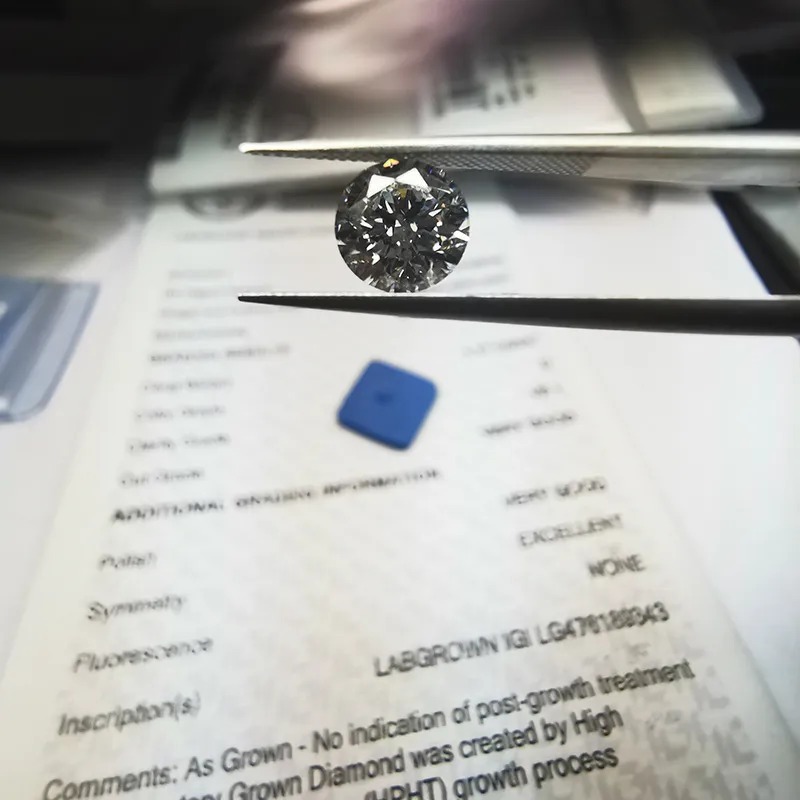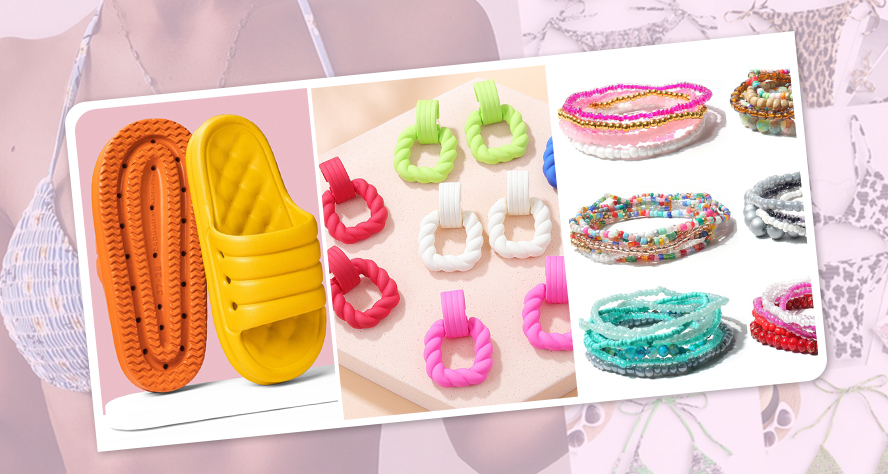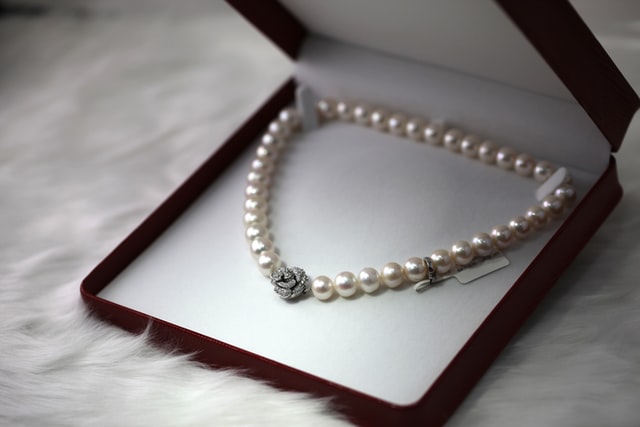In the last couple of years, lab-grown diamonds have become very popular for obvious reasons – they are striking and affordable.
The price of a 5-carat lab-grown diamond is much lower than the price of a 5-carat natural diamond.
In this article, we will explore lab-grown diamonds in more detail.
We can’t guarantee that you’ll end up a diamond expert, but you’ll certainly learn more about the coveted lab-grown diamonds.
What is a lab-grown diamond?
Lab-grown diamonds are also referred to as man-made diamonds, lab diamonds, and lab-created diamonds.
It makes them a more affordable option for many retailers because Lab-grown diamonds are often cheaper than natural diamonds.
Common methods of growing diamonds include the popular methods of Chemical Vapor Deposition (CVD) or High Pressure High Temperature (HPHT).
Lab-created diamonds share an identical growing process to mined diamonds.
They form first as carbon atoms under high temperatures and immense pressure, then bond together to grow a crystalline lattice structure.
Once fully formed, they are cut and polished to reveal maximum brilliance.
Why choose lab-grown diamonds?
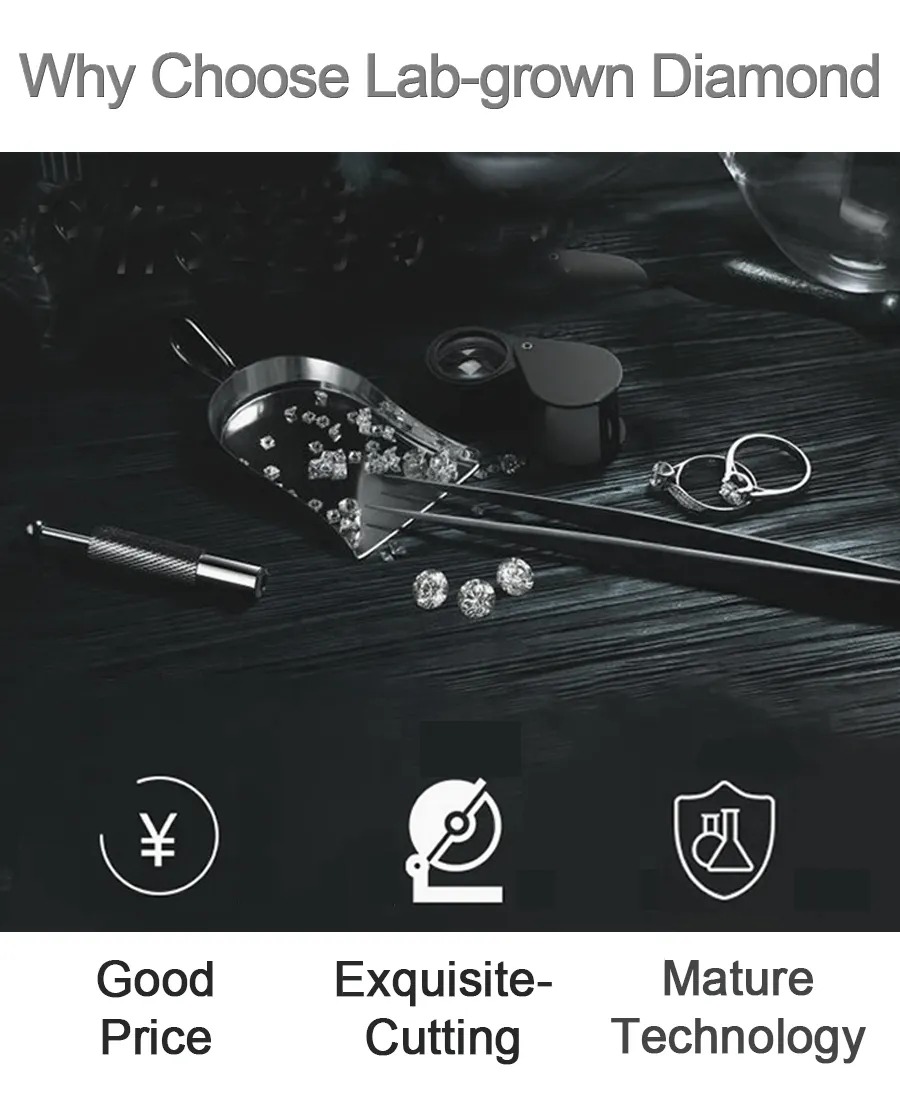
By choosing lab-grown diamonds, you can get more carats and more sparkles at a lower price.
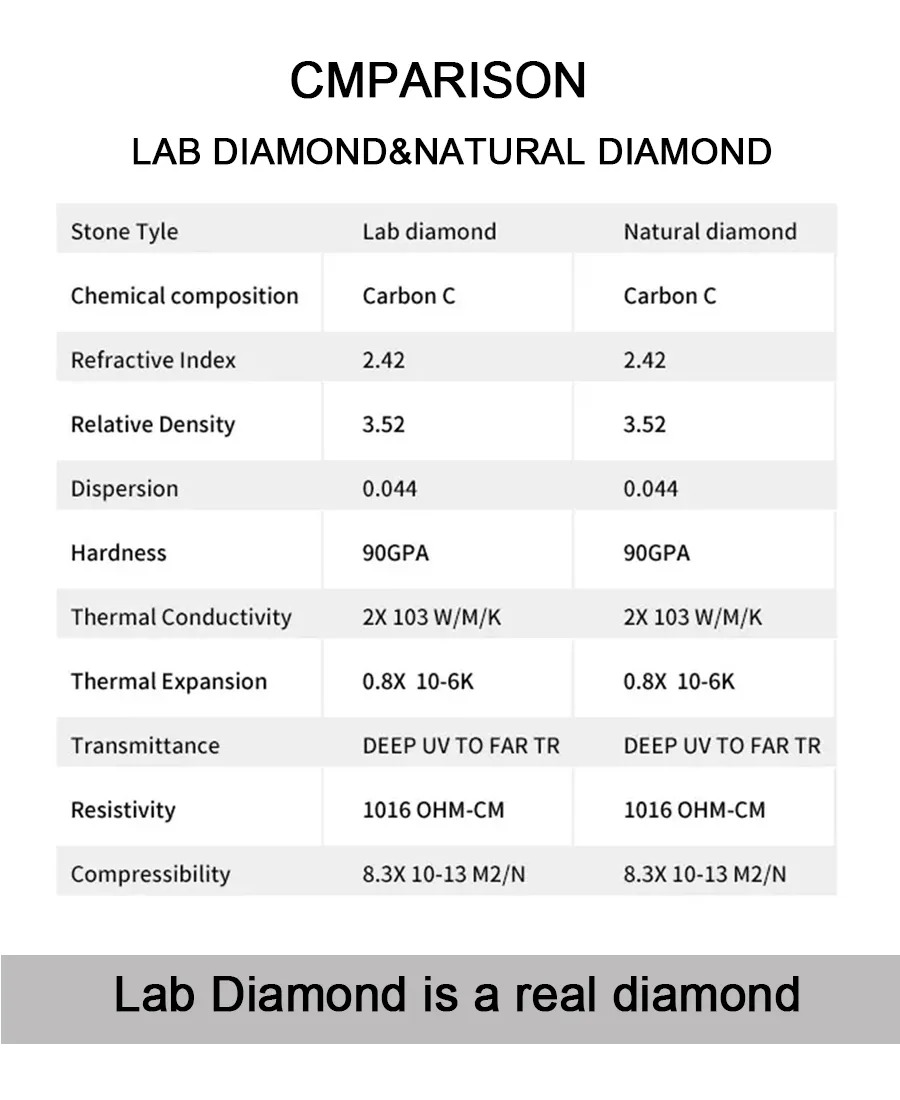
Lab-grown diamonds are of superior quality in terms of clarity and purity.
Diamonds grown under controlled conditions have very few inclusions and flaws, making them more pure and flawless.
This means that lab-grown diamonds have the potential to be even more brilliant than diamonds that are mined locally.
The process of creating lab-grown diamonds also offers a wider choice of colors and grades.
In the past, certain colors and grades of diamonds were very rare and therefore extremely expensive.
However, lab-grown diamonds are free from these limitations and offer a wide range of stunning options.
Status of development of lab-grown diamonds
The global lab-grown diamond business is experiencing significant growth and innovation as the international market for lab-grown diamonds continues to expand.
Up to 80% of consumers in the United States are aware of cultivated diamonds, and up to 77% of young consumers in the European region are aware of cultivated diamonds.
The global lab-grown diamond industry is expected to grow at a CAGR of 9.6% from 2023 to 2032, according to a new report published by Allied Market Research.
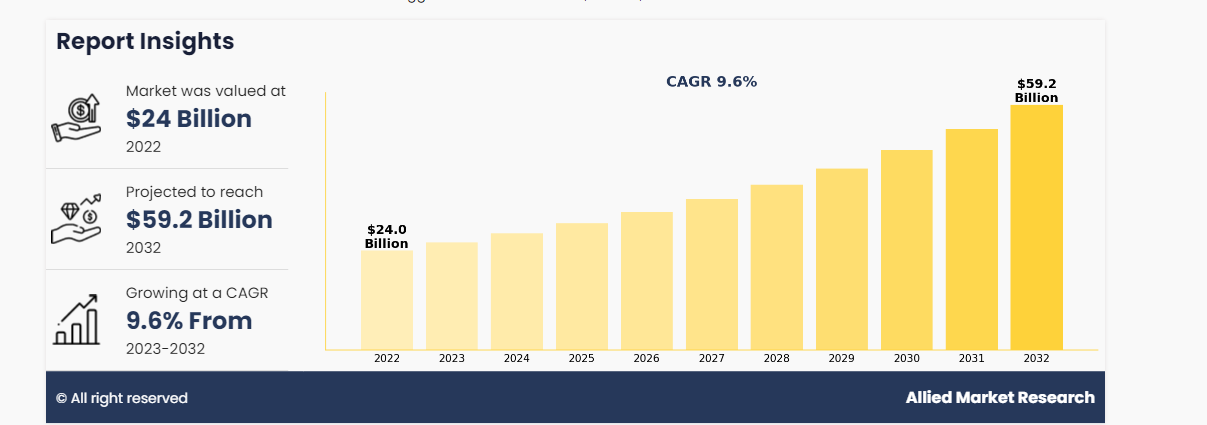
The surge in demand from the lab-grown diamond industry is attributed to its cost-effectiveness, which appeals to consumers seeking to purchase high-quality gemstones at more affordable prices.
In addition, the diamond industry has begun to embrace lab-grown diamonds.
Some major jewelry retailers, such as Tiffany & Co., have started offering lab-grown diamonds in their stores.
This indicates that the diamond industry recognizes the growing popularity of lab-produced diamonds.
Despite concerns about the lifetime value of synthetic diamonds, the future of lab-grown diamonds remains bright as seen in Google Trends.
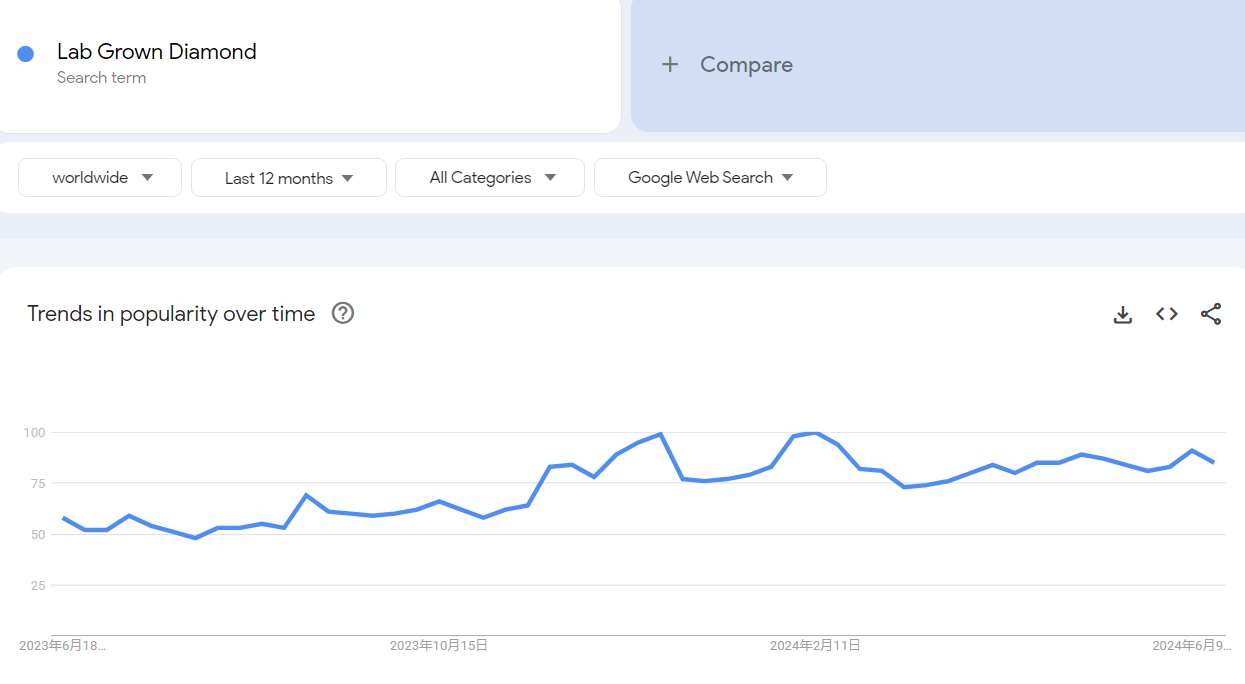
Complete Guide to the 4Cs of Lab-Grown Diamonds
Lab-grown diamonds are cultivated in a laboratory by simulating the natural environment in which natural diamonds are formed.
So they are identical to natural diamonds in terms of composition and characteristics.
There is no doubt that Lab-grown diamonds are therefore evaluated according to the 4Cs of diamond grading.
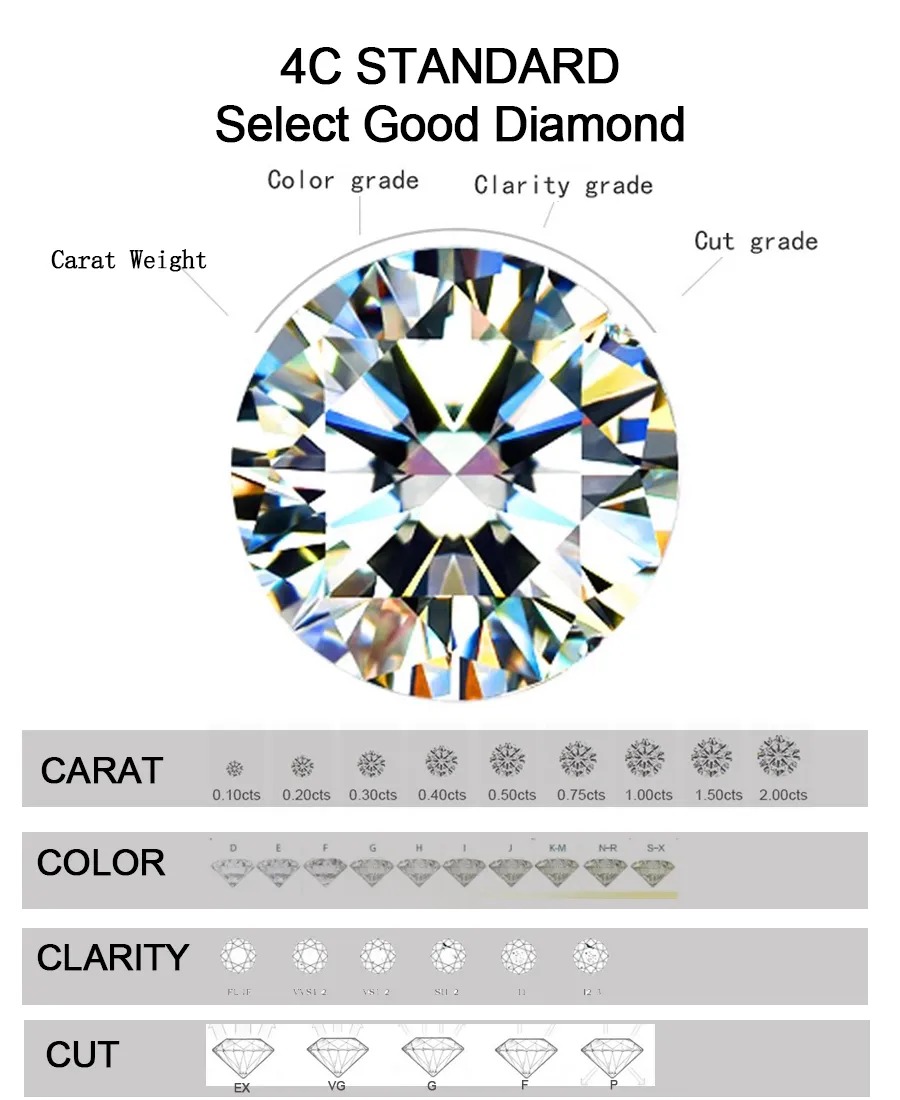
The 4C’s are clarity, cut, color, and carat weight and help determine the quality and value of each diamond.
Clarity
The clarity of a lab-grown diamond is judged by the number of inclusions and flaws.
There is a wide range of inclusions, from noticeable ones that can be seen by the naked eye to inclusions that are difficult to see even when the diamond is magnified.
The more obvious inclusions can affect the appearance of the diamond and to some extent its sparkle.
Diamond clarity grades are determined under standard viewing conditions at 10 times magnification and range from FL to I3.
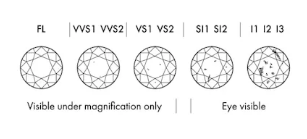
- FL/IF: Flawless / Internally Flawless: No flaws visible, even with x10 magnification.
- VVS1-VVS2: Very, Very Slightly Included: Flaws exist but are difficult to see, even via x10 magnification.
- VS1-VS2: Very Slightly Included: Flaws can only be seen with x10 magnification.
- SI1-SI2: Slightly Included: Difficult to see with the naked eye, but can be seen via x10 magnification.
- I1-I3: Included: noticeable.
Clarity is one of the most important factors in pricing. The higher the clarity grade, the higher the price.
There is little difference between lower grades (e.g. SI to VS), but prices can increase significantly for VVS or IF grades.
Cut
Cut is the most important factor in diamonds because it gives them the ability to disperse light.
A specialized cut creates multiple facets that absorb and reflect light, allowing the diamond to sparkle from all angles.
Let’s try to understand the different cuts of diamonds and their special features.
- Round Brilliant
According to research, ‘round’ lab-grown diamonds are one of the most popular. About 75% of the diamonds sold are round.
Round diamonds have a classic, timeless appeal. It is the most versatile and versatile diamond.
It has 58 facets, which cause light to bounce from the bottom of the diamond back through the top.
Lab-created round-cut diamonds are called RBC (round brilliant cut) because of their popularity.
- Oval
The Oval is a classic shape that makes fingers appear longer, and oval cut diamonds have 56 to 58 facets for an elegant, regal look.
Lab-created oval-cut lab-created diamonds are known for their remarkable brilliance. This cut is even, symmetrical, and elegant.
What is more, it lends itself well to different kinds of contemporary and modern jewelry designs.
- Emerald
Emerald-cut diamonds are rectangular with stepped-cut facets and a large table (flat at the top) for a smooth, refined appearance.
Lacking brilliance, the flat part of the top of the diamond shows off its clarity better than any other shape.
Even though it lacks brilliance, it appears elegant, and that is why it is one of the most recommended cuts.
- Pear
As the name suggests, the Pear cut diamond resembles a teardrop.
It appears like a mix of the marquise and the oval and can be elongated or made fatter depending on one’s preference.
Pear-cut diamonds have 56 to 58 facets for a unique and striking look.
This shape is quite popular for engagement rings and highly recommended by jewelry designers.
- Radiant
The Radiant cut diamond is yet another square-shaped diamond with rounded corners.
This shape has an extra sparkle because of the way its underside is cut, with 70 facets.
It maximizes the effect of its color refraction. The Radiant shape is mostly used for finger rings and earrings.
- Cushion
Cushion-cut diamonds are square or rectangular with rounded corners, shaped like a cushion or pillow. It has 58 facets and a soft, romantic look.
It is known for its flawless brilliance and clarity. These qualities are attributed to their rounded corners and larger facets.
- Marquise
The marquise-cut diamond is oval with rounded sides and points at the end.
marquise-cut diamonds have 56 facets for a bold and striking look.
Due to its elongated shape, this cut ends up appearing larger than its actual size. It is recommended for those who are looking to maximize carat weight.
- Trillion
Often, Trillion-cut diamonds are also referred to as triangular diamonds.
Trillion-shaped diamonds are known for their excellent sparkle and brilliance. They may have up to 31 to 50 facets.
Trillion-cut diamonds are often used as diamond accents and are a great match for pendants and bracelets to ensure a perfect fit.
- Asscher
The asscher-shaped diamond is quite identical to the emerald cut, with the only difference being its square shape as compared to the rectangle.
It has cut corners, a rough outline, and stepped sides and is popular for its elegant appearance.
This shape is quite popular among those who prefer a vintage vibe.
- Princess
The Princess diamond is square and intricately faceted with 76 facets for a modern geometric look.
The additional facets also mean that fewer flaws are noticeable in this shape.
It is the second most popular shape after the round.
In terms of cut, the Princess diamond is one of the least expensive diamond shapes.
Color
Although man-made diamonds are supposed to look perfectly white, lab-created diamonds are not flawless.
The IGI grades diamonds on a diamond color scale from D to Z, where Z indicates that the diamond has a distinct yellow or brown color.
- Colorless (DEF) D is the highest color grade, indicating that the diamond is almost colorless even under magnification. e and F stones are colorless, but less transparent than D stones.
- Near Colorless (GHIJ) Diamonds in the G to J color grades are nearly colorless. In most cases, they look the same as diamonds in grades D through F but are much less expensive.
- Slight Color (KLM) Diamonds in the K to M range appear yellowish to the naked eye. However, these stones are usually “set white” or colorless when set in yellow or rose gold.
Carat Weight
Diamond carat has nothing to do with the size of the diamond, but rather with the weight.
The carat is a unit of weight used exclusively to measure diamonds, including lab-grown diamonds.
1-carat diamond = 100 points =0.2grams
The larger the carat size of a diamond, the higher the price.
A comparison of the diameter size of different carats is referenced below:

Metal of lab-grown diamonds
Typically, the metal we choose for our diamond setting affects the color of the diamond.
Choosing the metal that best complements the diamond will ensure that the diamond is presented in the best light.
The metals that can be set with lab-grown diamonds are:
- S925 Sterling Silver
- 14K gold
- 14K white gold
- 14K rose gold
- 18k gold
- 18K white gold
- 18K rose gold
- Platinum
- Colorless diamonds look great with platinum or white gold.
The pure white color of a colorless diamond creates a cooler tone and works best with silver-colored metals.
Choosing a cool metal brings out the purity of the diamond’s color. In addition, platinum jewelry is approximately 95% pure, making it ideal for those with more sensitive skin.
Because platinum is not plated with any colored coatings and is more durable than gold, it will retain its fresh look longer.
- Nearly colorless diamonds look great with white, yellow, or rose gold.
Most of these versatile diamonds are white and look great with any type of metal setting.
The warm colors of yellow and rose gold work well to hide any traces of color. Rose gold is a more fashionable option but is usually only used for everyday wear jewelry.
Of these, 18K white gold is the most popular choice. However, white gold is rhodium-plated and may fade to a soft champagne color over time.
- Slight-colored diamonds look great in yellow or rose gold.
The yellow and brown undertones of light-colored diamonds work best with equally warm metals.
The real difference between 14K white gold and 18K white gold is the purity of the gold – 14K contains 58.3% pure gold, while 18K contains 75% pure gold.
18K gold is slightly less durable than 14K gold. However, due to the purity of the gold, 14K lacks the richness of color of 18K gold, and 14K gold is also usually cheaper.
IGI certification for lab-grown diamonds
IGI Certification is the process of evaluating and certifying diamonds to verify their authenticity and quality.
The International Gemological Institute (IGI) is the world’s largest independent diamond certification and evaluation organization.
IGI grading reports play an essential role in the global diamond, gem, and jewelry market, serving as the common language of trust and confidence in the gemological world.
All aspects of the diamond are carefully examined, including the 4C’s mentioned above – carat weight, color, clarity, cut, etc.
Once the evaluation is complete, the diamond receives a unique IGI certification number that can be used to verify its authenticity.
Nihaojewelry’s lab-grown diamonds are professionally certified by the IGI.
The product pages of their lab-grown diamonds contain certificates with all their details. You can buy with confidence.
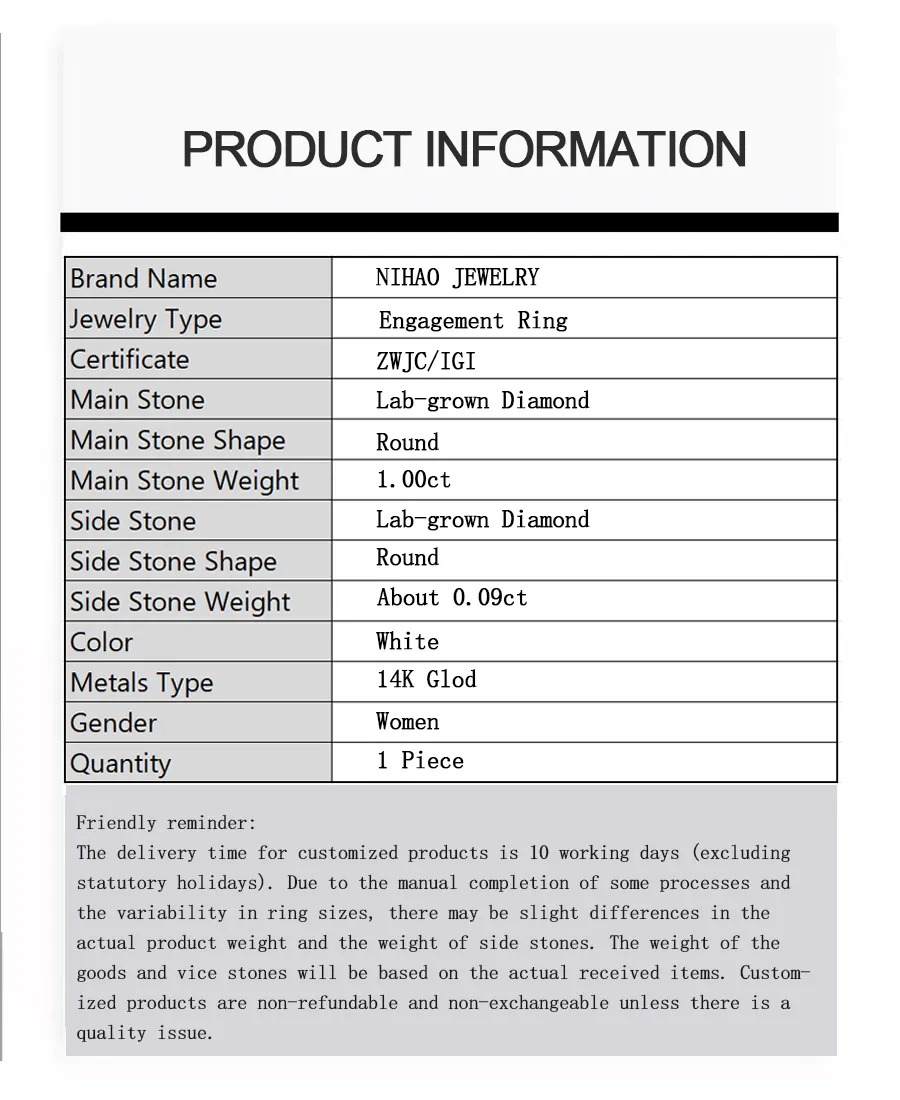
To buy lab-grown diamonds from Nihaojewelry, please refer to the following steps:
- you can provide relevant pictures and confirm with them the design effect you want;
- choose the diamond grade;
- Confirm the price of the finished product with them;
- make payment;
- wait for production and shipment.
They also gave us an early look at the product packaging for lab-grown diamonds, which is sophisticated and luxurious.

If you are looking for a diamond that has been thoroughly evaluated by experts and gives you peace of mind, then come to Nihaojewelry for an IGI-certified lab-grown diamond.
In Conclusion
More and more markets are beginning to recognize lab-grown diamonds. Many retailers prefer to choose lab-grown diamonds for better value for money.
Want to buy some high-quality lab-grown diamonds? Nihaojewelry is a good choice.
They offer a wide range of beautiful lab-grown jewelry. All aspects of the diamonds are scrutinized according to the 4C standards and are professionally certified by IGI.
Follow us for more professional jewelry knowledge.

